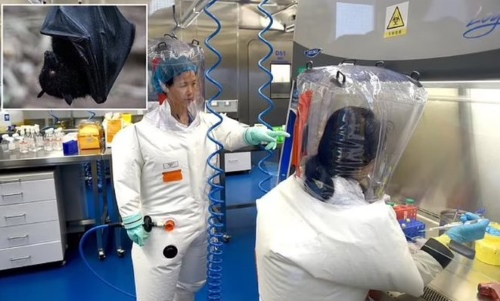Researchers at the Wuhan Institute of Virology have identified a new bat coronavirus named HKU5-CoV-2, which utilizes the same entry mechanism into cells as SARS-CoV-2, the virus responsible for COVID-19. However, the virus was not found in humans and was detected solely in laboratory experiments. The study, led by virologist Shi Zhengli at the Guangzhou Laboratory, highlights concerns about potential zoonotic transmission.
Key Findings
- Virus Name: HKU5-CoV-2
- Discovery Location: China
- Lead Researcher: Shi Zhengli, also known as "Batwoman"
- Similarities: Shares characteristics with both COVID-19 and Middle East Respiratory Syndrome (MERS-CoV)
- Transmission Risk: Limited human infection potential, though it can infect cells with high ACE2 receptor expression.
- Study Source: Published in the journal Cell
- Market Impact: News of the discovery influenced stock prices of vaccine manufacturers.
What is HKU5-CoV-2?
HKU5-CoV-2 is a newly discovered bat coronavirus linked to the Merbecovirus subgenus, which includes the Middle East Respiratory Syndrome (MERS) virus. It originates from the HKU5 strain first identified in the Japanese pipistrelle bat in Hong Kong. While it has the potential to infect humans, more studies are needed to assess its transmission dynamics.
Characteristics of HKU5-CoV-2
HKU5-CoV-2 is found in bats which which was discovered in China and uses the ACE2 receptor for cell entry. It is very similar to SARS-CoV-2 but as per the Wuhan Institute of Virology, HKU5-CoV-2 has a lower risk in human transmission. Here are its features in detail:
| Feature | Description |
| Origin | Found in bats in China |
| Subgenus | Merbecovirus |
| Infection Mechanism | Uses ACE2 receptor for cell entry |
| Similarity to SARS-CoV-2 | Contains furin cleavage site |
| Human Transmission Risk | Lower than SARS-CoV-2 |
| Antiviral Response | Monoclonal antibodies and antiviral drugs show effectiveness |
How Does HKU5-CoV-2 Spread?
HKU5-CoV-2 is a part of the HKU5 coronavirus family, known for originating in bats. While it possesses a furin cleavage site, a feature that enhances viral entry into cells through the ACE2 receptor, researchers believe its ability to infect humans is lower than that of SARS-CoV-2.
Key Transmission Insights
| Feature | HKU5-CoV-2 | SARS-CoV-2 (COVID-19) | MERS-CoV |
| Origin | Bats | Bats/Pangolins? | Bats/Camels |
| Receptor Usage | ACE2 | ACE2 | DPP4 |
| Human Infection Risk | Limited | High | Moderate |
| Symptoms Overlap | Yes | Yes | Yes |
Does HKU5-CoV-2 Infect Humans?
Scientists emphasize that not all coronaviruses infect humans. Although HKU5-CoV-2 showed infection potential in test tubes and human airway/intestine models, its real-world transmissibility remains uncertain. Michael Osterholm, an infectious disease expert, suggests that concerns over this virus may be exaggerated.
Research Leadership: Shi Zhengli’s Role

Source: firstpost
Shi Zhengli, a prominent virologist from the Wuhan Institute of Virology, led the study along with scientists from:
- Guangzhou Academy of Sciences
- Wuhan University
- Wuhan Institute of Virology
She has been a key figure in bat coronavirus research and has denied claims linking the COVID-19 outbreak to lab leaks.
Is HKU5-CoV-2 a Major Threat?
According to researchers, HKU5-CoV-2 is less likely to cause a human outbreak than SARS-CoV-2. Some key points:
- The virus does not bind as efficiently to human ACE2 receptors.
- Suboptimal factors suggest it is not well-adapted for human transmission.
- Experts like Michael Osterholm believe the global immunity against SARS-like viruses may further reduce risks.
However, scientists stress the importance of continuous monitoring to prevent potential spillover events.
Related Studies and Findings
A separate study by researchers from the University of Washington and Wuhan University found that while HKU5 can bind to bat and mammalian ACE2 receptors, efficient human binding was not detected.
Conclusion
While HKU5-CoV-2 can infect human cells, current evidence suggests that it poses a lower risk compared to SARS-CoV-2. Ongoing research and monitoring remain crucial to understanding and mitigating potential future outbreaks.
Comments
All Comments (0)
Join the conversation